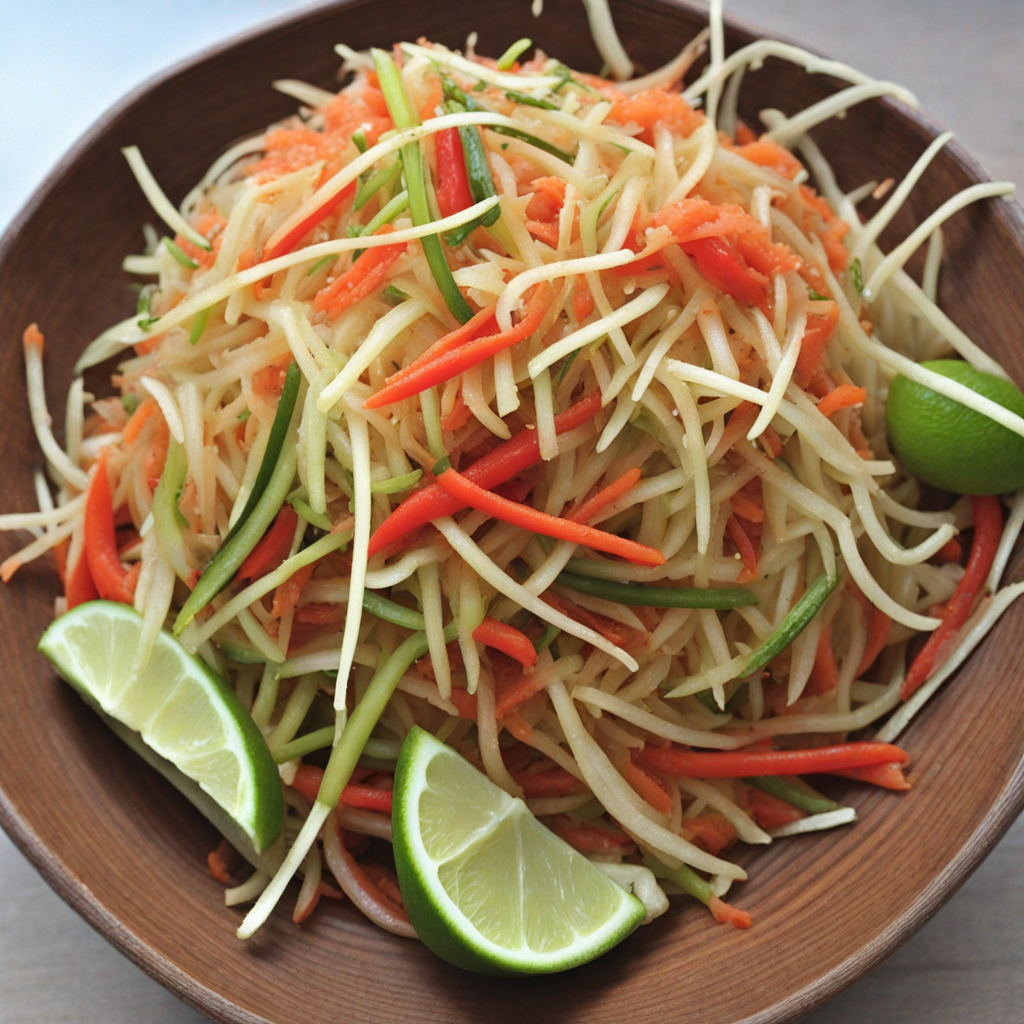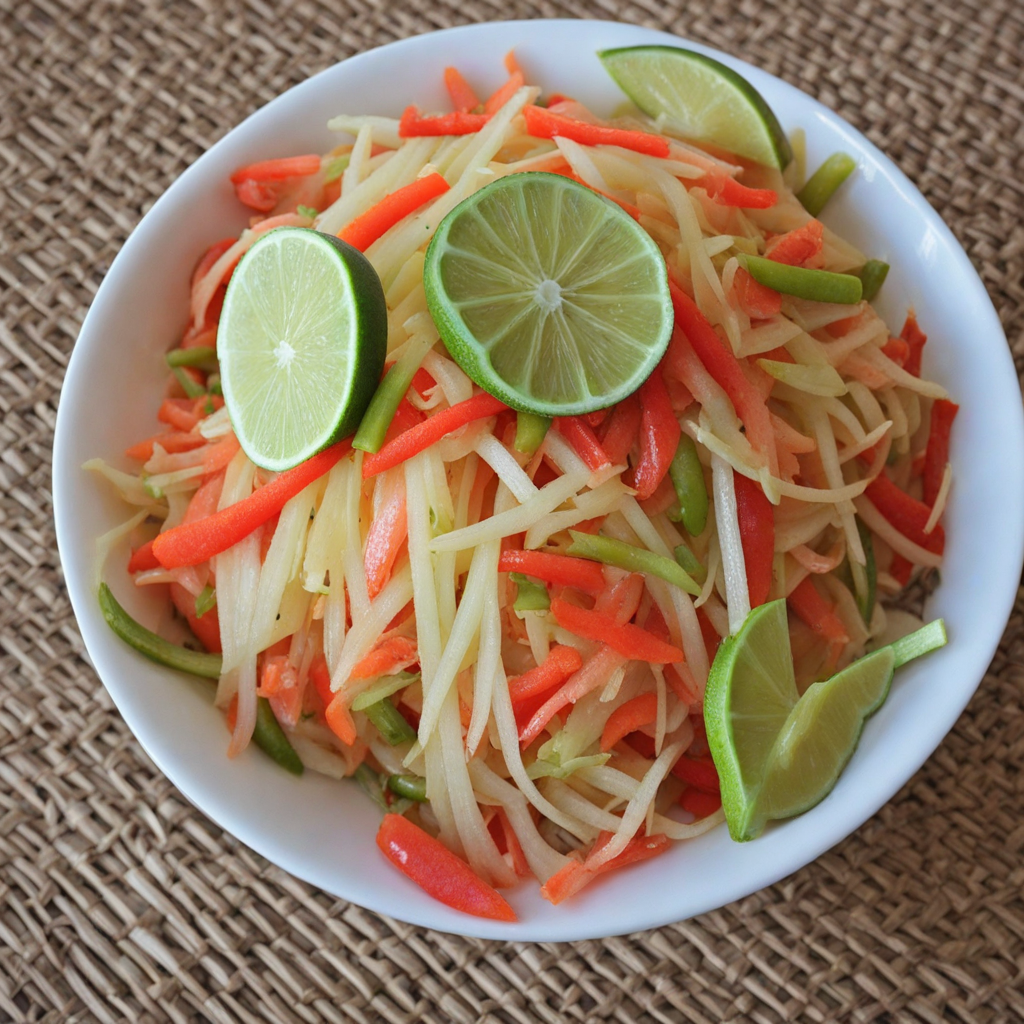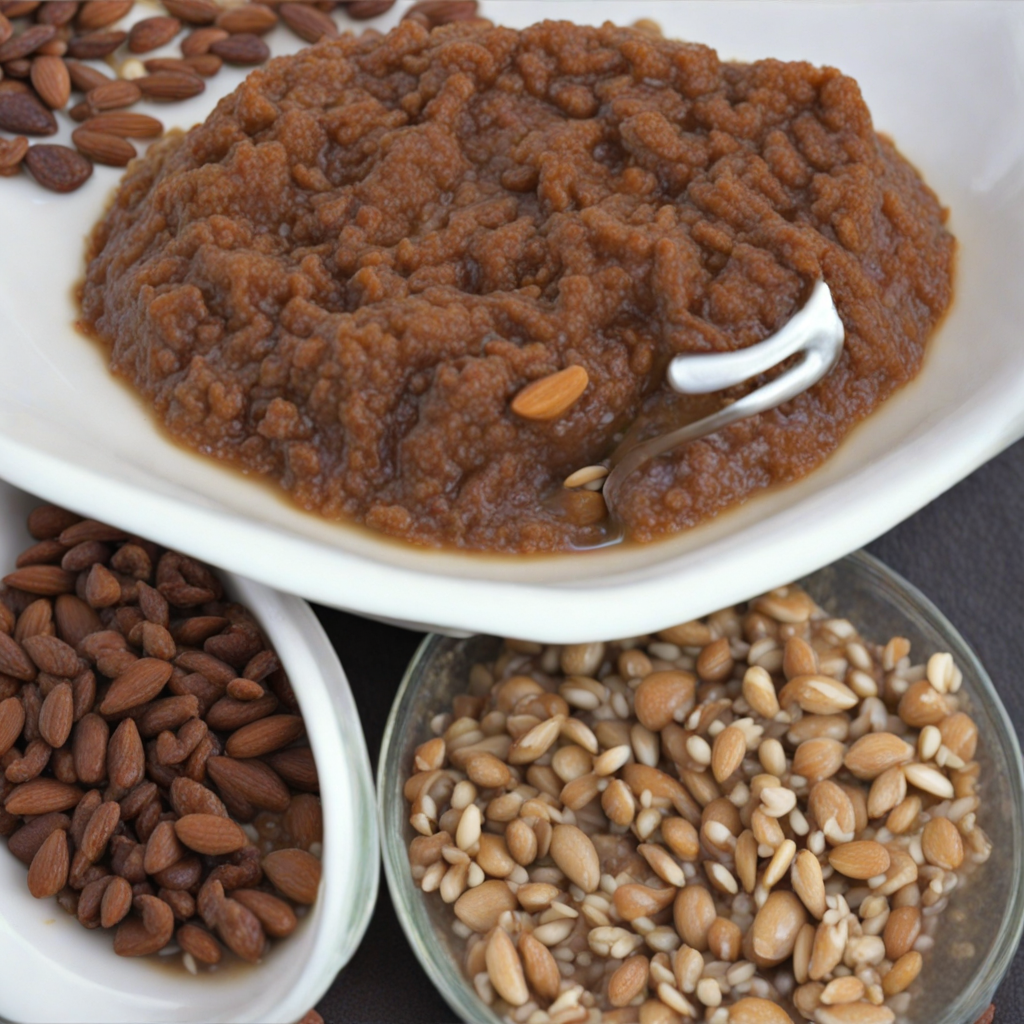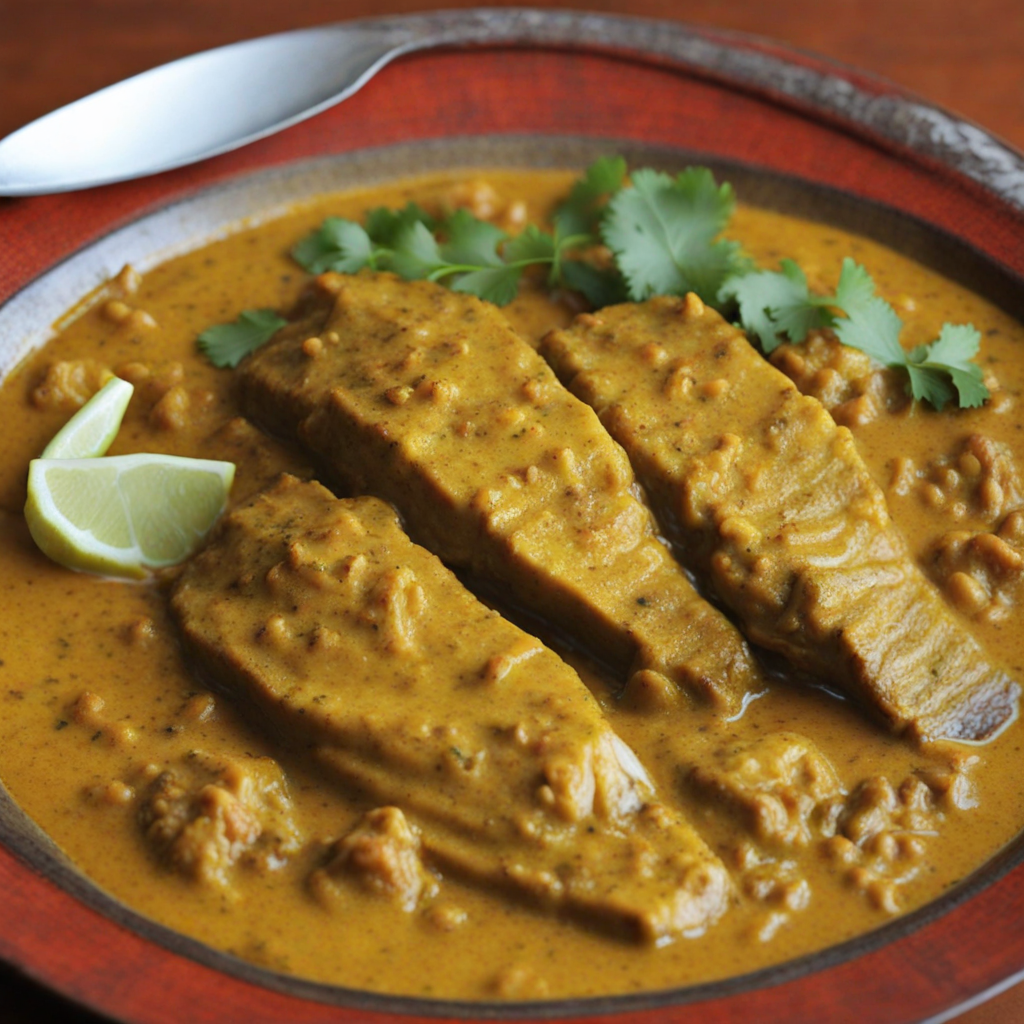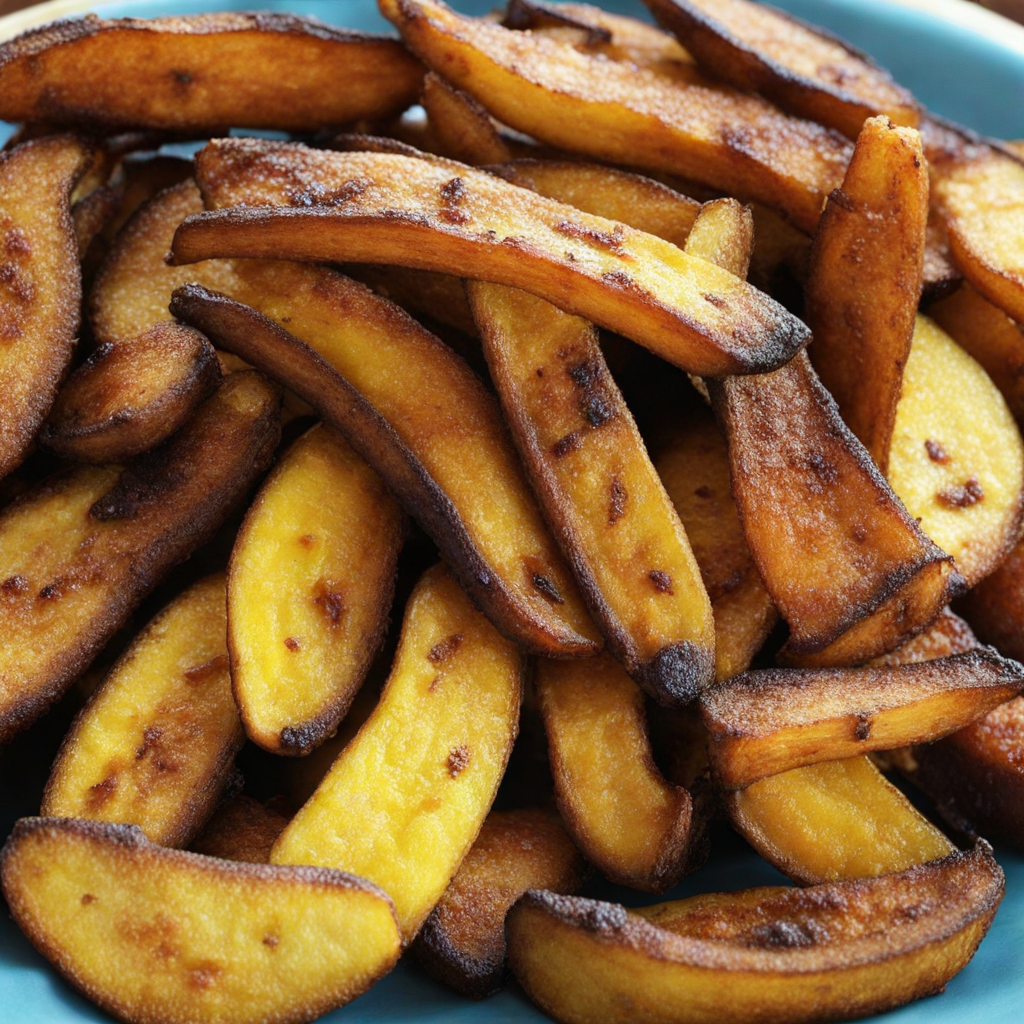Papaya Salad
Papaya Salad, a vibrant dish from the Solomon Islands, is a delightful exploration of fresh flavors and textures that showcases the region's bountiful produce. At its core, this salad features unripened green papaya, which is finely shredded to create a crisp base. The green papaya lends a subtle sweetness and an underlying crunch, making it the ideal canvas for an array of other ingredients. Combined with an assortment of local vegetables, such as tomatoes, carrots, and bell peppers, the salad bursts with colors that are as inviting as they are appetizing. The dressing of Papaya Salad elevates it to a new level, often consisting of a tangy mix of lime juice, fish sauce, and chili. This combination adds a zesty kick that balances the sweetness of the papaya while enhancing the fresh vegetables’ natural flavors. The addition of crushed peanuts or grated coconut provides a nutty richness and a delightful texture that contrasts beautifully with the crispness of the salad. Some variations may include fresh herbs like cilantro or mint, which infuse the dish with aromatic notes, creating a refreshing experience on the palate. Eating Papaya Salad is not just about savoring its taste; it's an experience that reflects the vibrant culture of the Solomon Islands. This dish is often enjoyed as a side to grilled fish or chicken, making it a perfect complement to a tropical meal. Its lightness and refreshing qualities make it ideal for warm weather, while the blend of flavors offers a delightful escape for food enthusiasts eager to explore the culinary treasures of the Pacific. Each bite encapsulates the essence of the islands, inviting you to discover a new and exciting taste sensation.
How It Became This Dish
The History of Papaya Salad in the Solomon Islands Papaya salad, known locally as "Tuna," is a vibrant and refreshing dish that encapsulates the culinary heritage of the Solomon Islands. This dish is more than just a combination of ingredients; it represents a rich tapestry of cultural influences, agricultural practices, and social customs that have evolved over centuries in this Pacific archipelago. #### Origins of Papaya Salad The origins of papaya salad in the Solomon Islands are deeply intertwined with the history of the papaya fruit itself. Native to Central America, papaya (Carica papaya) was introduced to the Pacific Islands through trade and migration. By the time of European contact in the late 18th century, papaya had already established itself in various island communities, including those in the Solomon Islands. The warm, tropical climate of the islands provided an ideal environment for papaya cultivation, making it a staple fruit among local populations. The salad itself is a reflection of the indigenous practices of utilizing available resources. Early inhabitants of the Solomon Islands relied heavily on their natural environment for sustenance, and as such, they developed ways to incorporate local produce into their diets. Papaya salad typically includes unripe papaya, which is shredded and mixed with a variety of ingredients such as tomatoes, chili, lime, and fish sauce. This combination highlights a harmonious balance of flavors, from the sweetness of the papaya and the acidity of lime to the heat from the chili peppers. #### Cultural Significance Papaya salad holds significant cultural importance in the Solomon Islands, acting as both a daily staple and a celebratory dish. It is often served during communal gatherings, feasts, and festivals, representing hospitality and the spirit of sharing. The preparation of papaya salad can be a communal activity, with families or friends coming together to create a large batch that can be enjoyed by many. This not only strengthens social bonds but also reinforces the cultural practice of sharing food as a symbol of unity. In addition to its role in communal dining, papaya salad is often associated with traditional ceremonies and rites of passage. For instance, it might be served during weddings or other significant events as a way to honor guests and signify abundance. The dish's vibrant colors and fresh flavors resonate with the island's lush landscape and vibrant culture, making it a visual and gastronomic celebration of the Solomon Islands. #### Development Over Time As with many traditional dishes, the preparation and ingredients of papaya salad have evolved over time, influenced by globalization, migration, and cultural exchange. In the past, the salad primarily featured local ingredients, reflecting the seasonal availability of produce. However, increased contact with other cultures has introduced new flavors and techniques, enriching the dish's complexity. The arrival of Asian communities in the Solomon Islands, particularly during the colonial period and post-World War II era, brought with it new culinary influences. Ingredients such as soy sauce, sesame oil, and various types of seafood became more widely available and were gradually incorporated into the local cuisine. Papaya salad is now often prepared with variations that include shrimp, crab, or even tofu, showcasing the adaptability of the dish and the blending of different culinary traditions. Moreover, the globalization of food culture has led to the rise of fusion cuisines, where traditional recipes are reimagined through modern interpretations. In urban areas and among younger generations, papaya salad can be served in more contemporary settings, sometimes accompanied by international flavors or served as part of a more extensive menu that reflects both local and global influences. #### Modern Day Papaya Salad Today, papaya salad continues to be a beloved dish in the Solomon Islands, celebrated for its refreshing taste and nutritional benefits. The dish is often featured in local markets, family gatherings, and restaurants, where it serves as a reminder of the islands' agricultural bounty and cultural heritage. The popularity of papaya salad has transcended local boundaries, finding its way into the culinary repertoire of chefs and food enthusiasts around the world, symbolizing the universal appeal of simple, fresh ingredients. In recent years, there has been a growing movement to promote the consumption of traditional foods as a means of preserving cultural identity and supporting local agriculture. Initiatives aimed at educating younger generations about the importance of traditional dishes like papaya salad help ensure that the culinary heritage of the Solomon Islands is passed down. Community workshops, cooking classes, and food festivals are increasingly being organized to celebrate local cuisine, with papaya salad often taking center stage. #### Conclusion The story of papaya salad in the Solomon Islands is a testament to the resilience and adaptability of local cuisine. From its origins linked to the introduction of papaya to the diverse influences that have shaped its evolution, this dish embodies the spirit of the islands and the people who inhabit them. As papaya salad continues to be enjoyed by locals and visitors alike, it serves as a delicious reminder of the Solomon Islands' rich cultural history and the importance of food as a means of connection, celebration, and identity. In every bite of this delightful salad, one can taste the story of the land, its people, and their enduring relationship with nature and tradition.
You may like
Discover local flavors from Solomon Islands


